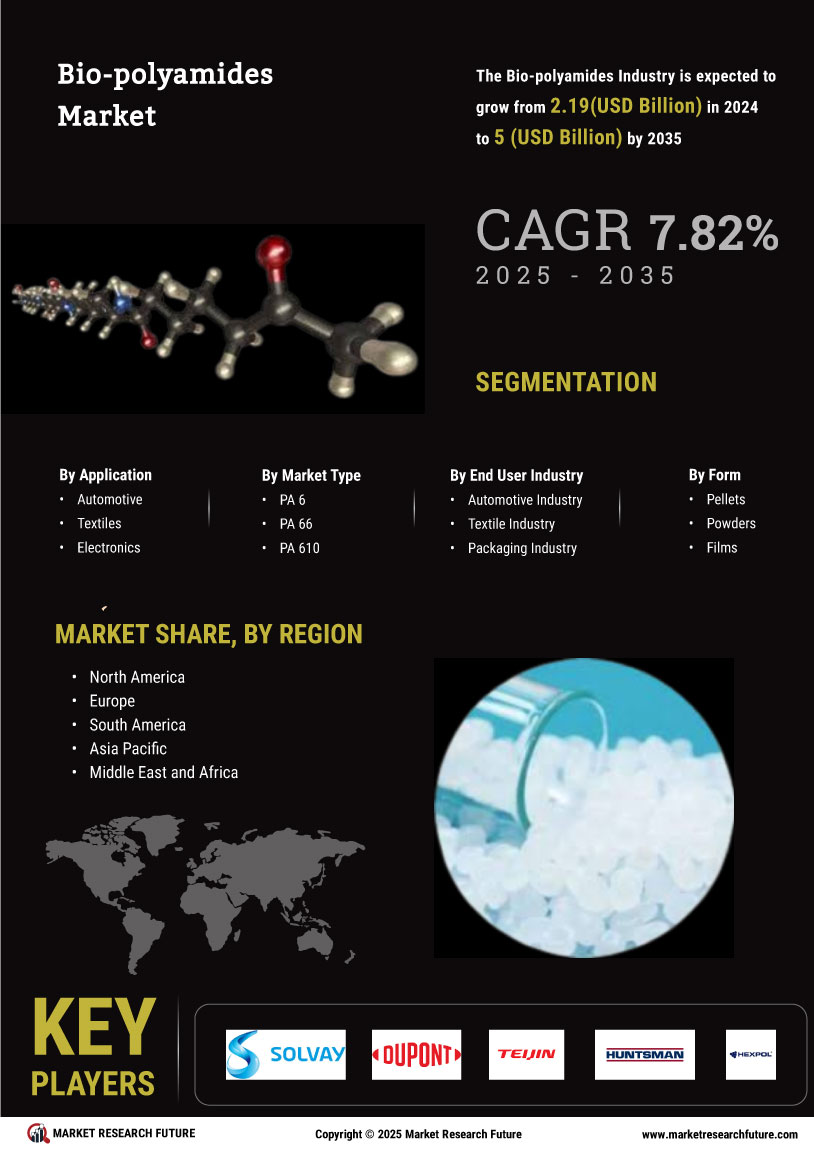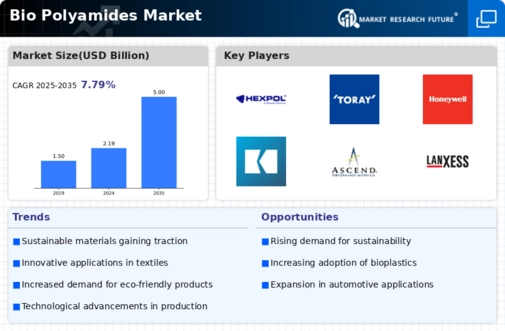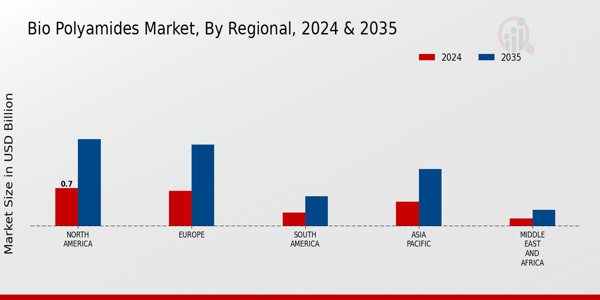The Bio Polyamides Market is characterized by a dynamic competitive landscape, driven by the increasing demand for sustainable and environmentally friendly materials across numerous industries, including automotive, textiles, and packaging.
Key players in this market are leveraging their research and development capabilities to innovate and enhance their product offerings, catering to the specific needs of diverse applications.
Companies are focusing on expanding their market presence through strategic partnerships, mergers and acquisitions, and investments in technology to improve production processes.
This competitive environment is further intensified by the growing emphasis on sustainability and reducing carbon footprints, prompting firms to adopt bio-based alternatives to traditional polyamides.
Hexpol stands out in the Bio Polyamides Market as a significant player with a substantial commitment to innovation and sustainability. The company has developed a range of bio polyamide products that showcase its strength in addressing the needs of various sectors, including automotive and consumer goods.
Hexpol’s ability to leverage its advanced technology and research capabilities has enabled it to create high-performance materials that meet stringent industry standards while promoting eco-friendliness.
The company also prioritizes customer satisfaction, actively engaging with clients to provide tailored solutions. With a robust distribution network and a strategic focus on expanding its global footprint, Hexpol maintains a competitive edge through its technological advancements and a strong emphasis on sustainability.
Toray Industries has established itself as a formidable entity within the Bio Polyamides Market, focusing on a range of innovative solutions tailored to meet global demand. The company’s key products in this sector include high-performance bio-polyamide resins that serve industries such as automotive, electronics, and textiles, emphasizing strength, durability, and lightweight properties.
Toray Industries leverages its strong research foundation and technological prowess to continuously evolve its product lines, thereby ensuring relevance and competitiveness in the ever-changing market landscape.
The company also engages in strategic mergers and acquisitions, which have been instrumental in enhancing its product offerings and expanding its market presence globally.
With a strong commitment to research and sustainable development, Toray Industries positions itself as a leader in providing advanced and environmentally friendly bio polyamide solutions, reinforcing its competitive stature in the global marketplace.






















Leave a Comment